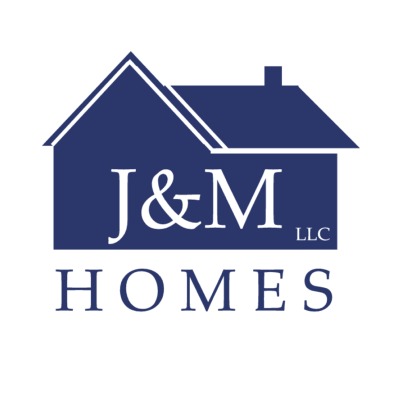Let me begin by making a clear definition of what a “Modular” home is, and is not. For the purpose of our Modular Homes supplied to the state of Washington we will use the definition as stated by the State of Washington Labor and Industries.
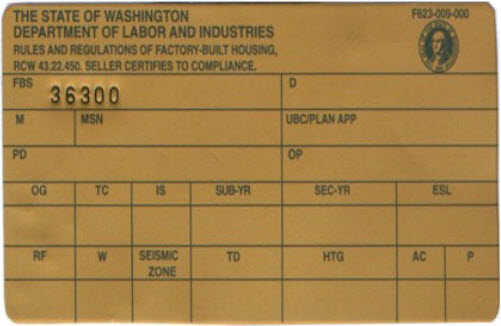 “Factory-built housing” is housing designed for human occupancy such as a single-family dwelling. The structure of any room is entirely or substantially prefabricated or assembled at a place other than a building site.
“Factory-built housing” is housing designed for human occupancy such as a single-family dwelling. The structure of any room is entirely or substantially prefabricated or assembled at a place other than a building site.
It may also include a component. A factory-built house is also referred to as a “modular” structure. Factory-built housing does not include manufactured (mobile) housing.
Once approved each home sited for WA state will be affixed with a label certifying it as being built to conform to the rules and regulations of factory-built housing, commonly called a “Gold Label” .
The Modular homes produced by CMH will be a closed construction, factory built unit in compliance with all WA amendments to the IRC International Residential Code. Inspections and on-site compliance is performed by the local enforcement agency.
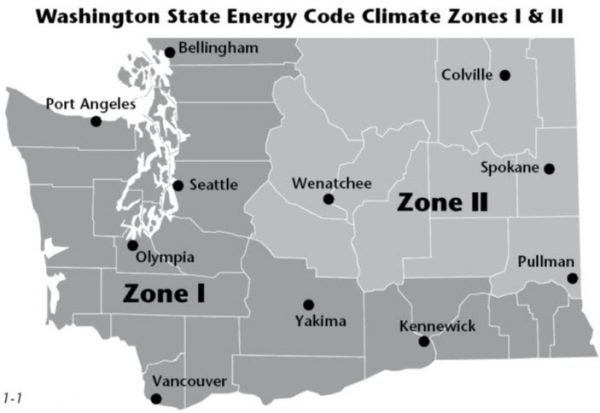
All Modular units will comply with all local requirements and we must have the site location prior to requesting approved plans from the state of Washington. Local design criteria will include climate zone such as wind and temperatures, seismic zone, and ground snow loads.
CMH homes are designed for specific local regions. Manufactured homes can be sited across state lines without restriction. Unlike manufactured homes, modular homes must be placed on a permanent foundation supporting the perimeter.
No steel frame remains under the unit; they are transported to site on a temporary carrier or lowboy truck and trailer.
Modular homes for Washington must have plans approved by Washington State Department of Labor & Industries and these plans must be “as built” and therefore we must make all design decisions well in advance of beginning construction.
The most compelling reason to choose a modular home over a manufactured home is in the area of financing. Most banks, appraisers, and insurance companies treat modular homes the same way they do site built homes, a house that’s constructed entirely on your property.
For this reason, appraisals, mortgage insurance, homeowners insurance, and interest rates remain on par with new site build homes and existing homes. Buyers get the best of both worlds, reliable controlled factory built quality plus the added advantage of local code compliance that delivers lower mortgage rates and higher comparable values.
Advantages and Disadvantages of Modular Homes
 The main advantage to modular homes is the ability to obtain financing at par with site built homes and the appraised value that will be comparable to other residential homes.
The main advantage to modular homes is the ability to obtain financing at par with site built homes and the appraised value that will be comparable to other residential homes.
Many of the features found in a modular homes may be seen in manufactured homes built to HUD code, however since the home is built to meet local code banks and appraisers use comparable site built homes to determine the value.
Flexibility mixing factory and on-site completion is permitted such as placing the furnace and water heater in a site-built garage. Code also permits 2 story and duplex units, placement on basements without special perimeter frames, and other on-site improvements without special “Alternate Construction” HUD inspections.
The ability to determine how much or little is completed in the factory in the design process can help to create homes with a more traditional architectural appeal.
Rock facades, portico entries, and attached porches can dress up an otherwise rectangular factory built home. HUD Code limits roof pitch to 7/12 and limits window placements and sizes to meet HUD egress and ventilation codes that are not compliant with certain design criteria that local codes may allow.
Disadvantages include a longer process for special plan approvals, with more restrictive code compliance for electrical safety, seismic, and thermal design. No alterations, including window placement, electrical or plumbing changes from the pre-approved plans make it mandatory that all design choices be considered up front and not during the construction process.
Modular homes must be installed on an approved permanent foundation. This can limit placement choices, such as on certain leased land and are more costly than manufactured homes placed on piers.
Differences in WA IRC code and HUD Standards
While many of the general construction features are the same, significant differences between the two codes make it impossible to convert one to the other. For example, a MODULAR may be built without a furnace and water heater, where a HUD code manufactured home may not.
A HUD code home does not require arc-fault circuit breakers where a MODULAR does. MODULAR homes mandate items not required in manufactured homes including:
 Anti-Scald Tub & Shower Safety Valves
Anti-Scald Tub & Shower Safety Valves- Plumbing Hammer Arrestors
- Tamper Resistant Electrical Receptacles
- 2 x 10 floor Joists
- Double Top Plates On Exterior Walls
- APA Rated Sub Flooring
- OSB Sheathing on Exterior Walls
HUD codes have certain advantages in the area of fire safety and fire escape where the site built code is more lax. One cost saving advantage to HUD code manufactured homes is the steel sub framework, and complete running gear attached so they can be more easily transported to site.
This eliminates the need for special equipment to set-up and the requirement of a permanent foundation.
Unlike HUD code manufactured homes, modular homes are certified to be compliant with the location that the home will be sited.
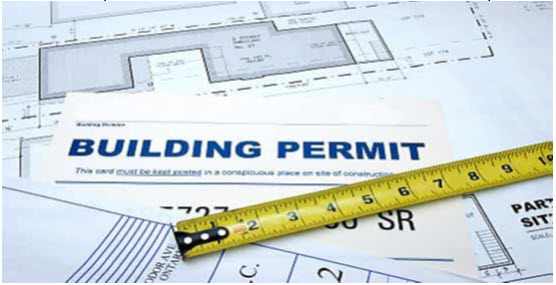
This includes the ground snow load, energy code, and seismic design. HUD codes only need be designed for the regional climate and wind zone, and the roof loading can be overbuilt allowing the design to cover large market areas rather than specific locations.
It is often acceptable to ship homes across state lines with the same design standards. This is not the case with most modular homes, as Washington State has a more stringent energy code to comply with.
To summarize, the choice of home construction type will most likely be determined on your customers’ economic situation and specific design needs. If they have cash to buy and prefer to customize a floor plan, then a HUD code manufactured home may be the best fit.
However if a customer requires a competitive mortgage rate, a low down payment, and is willing to work with preapproved plans, a modular home solution may work best for them.
Another type of customer is the custom homebuyer who insists upon modular construction because of the design aspects that can be considered.
This customer will need to be provided some specific direction as to the costs and delays the plan approval process can create for custom drawings.
These customers must be willing to pay up-front non-refundable deposits to get plans drawn, and we will require an approval of the final drafts before we submit them for state approval.
Approved plans must remain unchanged or additional amendment fees will also apply for changes after state review. While this type of customer requires more investment in time to complete each transaction, higher average home prices means a greater opportunity for profits.
Installation Considerations for Modular Housing
The installation and completion of a multi sectional modular home is very similar to HUD code manufactured homes with the main exception being the frame and utility systems below the home.
All CMH Modular Homes are off-frame modular construction with double 2×10 rim joists. Our site-ready floor system incorporates a truss type floor joist that has an open web design for both HVAC & Plumbing to be run within the floor cavity and insulated from the crawlspace.
We can also produce a standard 2×10 modular floor without insulation or ductwork for special situations where basements or custom HVAC systems may be desired.
Because Modular Homes are permanently affixed to a foundation, a full-engineered perimeter foundation system must be installed per local requirements. CMH will provide a foundation footprint detailing concrete footing sizes and pier locations part of the state submittal package.
The foundation, while part of the design package is not part of the cost of the home provided by the factory. Drainage, damp proofing, backfill support, and other local compliance issues must be addressed by your local officials and are not addressed in the design package provided by the CMH.
Special equipment that allows the home to be moved from the transport system to the foundation must be used to ensure a safe and smooth installation to the permanent foundation.
Rolling gear or the use of a crane should be determined by a careful site inspection by an experienced installer to insure staging space and conditions exist to support the weight of the rigging.
While the site ready package that is recommended by CMH will provide pre-installed floor ducting and fresh water systems, some wastewater connections will need to be made below the home crawl space to insure proper grade or cross-over connections between sectional units. Consult the installation manual for specific details.
We offer some homes with basic 2×10 floor framing that requires additional plumbing and heat ducting to be site-installed. This is a good option when placing homes on a full foundation where a fully insulated floor is not required.
Placing a home on a finished basement is another way to increase square footage however CMH does not design or construct basements. This would be considered the on-site portion of the construction.
Roof types will vary by plan but Modular Homes typically will have a 4/12-hinged type roof pitch where a hinge roof close-up process & ridge vent will be needed.
A boom crane may be needed to lift the roof and install any optional dormers.
Upon installation of the home on the foundation and the completion of the exterior close-up, the interior will be completed with the same methods typically used on manufactured homes.
Ordering Your First Modular Home
Provided we have a floor plan pre-approved the process will be similar to ordering a manufactured home. You however must insure the plan approvals will meet any specific codes that may deviate from the state cods. Contact the local building department where you plan to install the home.
Some localities may provide a list of unique requirements they have added to the state IRC code. You will also need to inform us of the wind zone, ground snow load, seismic design category, and climate zone required.
This may be a good time to check if any additional codes, covenants or restrictions are in place if you are placing the home in a private community or one with a neighborhood association.
Provide this information and we will let you know if any plan alterations will be required. Our standard build package is for a 30# PSF Ground Snow Load, 110MPH Wind Zone, Seismic Category D1, and Thermal Zone 1.
If the site is in a higher snowfall area or windy coastal region, we will have to resubmit our plans for approval. Expect additional charges for plan amendments as well as the option charge for the alterations. The amendments to the plans will take a few additional weeks of processing and must be approved before we can begin construction.
If significant changes are desired to a plan or your customer desires a floor plan not currently in our modular line up, we will have to create a new builder’s package to submit for approval. This process will require an investment of drafting time, and additional plan review fees will apply.
Unlike pre-approved plans, custom plans will have the burden of the entire cost of design, review, and approval. We will require an up-front, non-refundable design fee prior to requesting state plan review. This fee will be in addition to the cost of the home, not refunded or credited to the order.
The charge is to cover our costs for drafting time and the fees we are charged for plan review by Washington State. Because our drafting team designs the plan approvals based on our factory built processes. Before we submit for state approved plans, you will be provided a floor plan, elevation and foundation footprint so you may obtain a building permit.
This will provide the opportunity to review the plans, insure a loan commitment and apply for the permit. Once your review of the floor plan and all options for the home are complete, a signed-off, confirmed plan must be returned along with the design fee and we will forward any final alterations to our design team.
Once they are drafted and submitted to the state expect a wait of up to 4 weeks for state review before we can schedule the home order for production. Once we receive a full set of wet-stamped drawings then construction can begin.
Scheduling Production & Delivery
Once a confirmed order and approved plans are obtained we can schedule the home for production. The unit can be delivered on a factory provided carrier or you can choose a transporter who uses a lowboy modular trailer.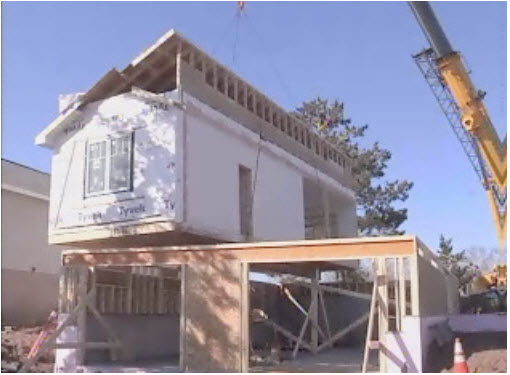
We need to know prior to production what direction the home will be transported so we can build it on the carrier in the correct orientation and install the transportation closeup in the proper direction to prevent wind damage.
If you have selected a factory provided carrier we will require a deposit on the invoice until the carrier is returned.
Units on modular carriers will have carrier serial numbers recorded so deposits can be refunded upon return. Homes to be delivered on flat bed trucks will be cribbed up for pick up in our finish yard. We expect factory provided carriers to be the most popular method of delivery. Be sure to discuss the logistics with your transporter and the costs associated with returning the carriers.
CMH will inspect the carriers upon return and any expenses required to return the carrier to usable condition may be debited from the deposit. Common issues include damaged lighting, tires, bent axles hubs, or brakes.
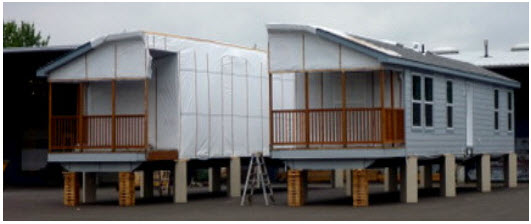
Site Completion & Inspections
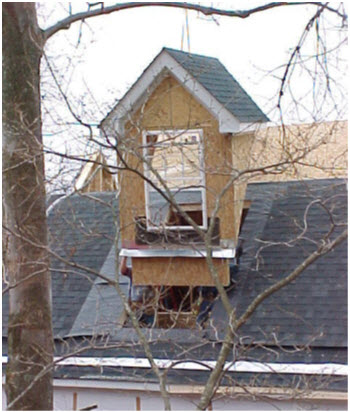 During construction inspections are preformed and all in-plant inspection fees are included in our quoted price.
During construction inspections are preformed and all in-plant inspection fees are included in our quoted price.
Once the home has received it’s final inspection, a state insignia is installed on the home certifying compliance.
A list of additional incomplete items that must be finished on-site prior to occupancy is generated and sent to Washington Labor & Industries to inform them of compliance items required to be completed on-location.
Any additional inspections that are done on-site are the responsibility of the retailer.
We will gladly provide information for all onsite completion items, along with the proper installation instructions but CMH cannot be responsible for any costs associated with installation, onsite construction, inspection fees or re-inspections that occur to achieve final occupancy.
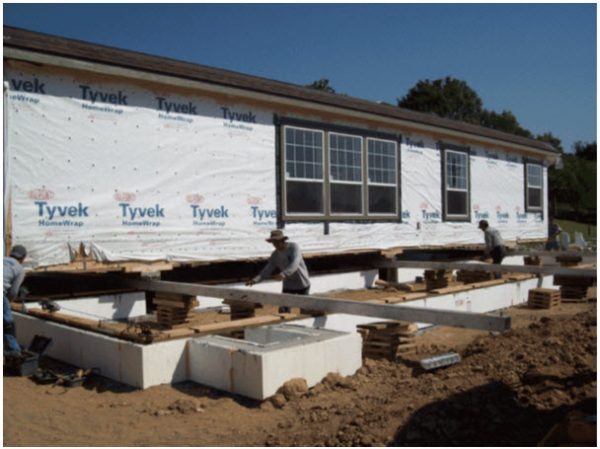
Items that you can expect to complete on-site include waste water drops and connections to the sewer or septic system, fresh water connections and cross-over unions, dryer venting, water heater overflow, pressure relief drainage from the crawl space, cap-trusses and shingles on the roof mating line areas.
Steep roof pitches with hinge trusses will have a longer list of completion items that may include ship loose, waste vent pipes through the roof, and exhaust ventilation routing.
It may be a good idea to pre plan and discuss the inspection process with your local building inspector to determine when to request the inspection to avoid having to reopen a roof cavity to verify compliance.
As with garage construction, the use of licensed and bonded contractors to perform certain on-site construction work should be expected.
The Final Result
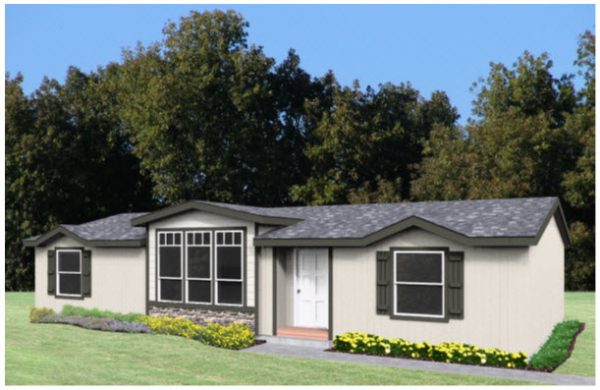
While leaping all the hurdles to complete your first modular home sale it may be tempting to reflect on the days when selling factory built homes was quick, simple, and lucrative.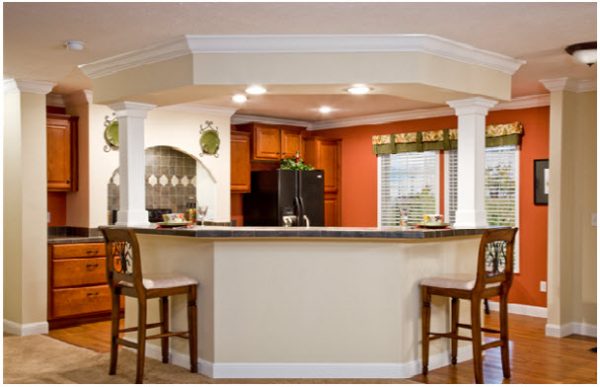
The results and rewards developing properties with modular homes will be far greater and reap more referrals and repeat business than you can imagine if done properly.
With the housing prices currently at record lows, your customer’s investment will grow in value creating referrals you can later benefit from. The availability of a larger supply of financing options with the added benefit of more comparable appraisal values will certainly allow you to qualify more customers.
Simply displaying homes that both look identical, and appraise at par with site built homes will open your market to customers you have never had the opportunity to reach before.
Once you become a modular expert, general contractors, investors, realtors, and developers will come to you seeking ways to develop properties using modular homes.
You will learn to discuss value added benefits of modular homes in multi unit developments such as reducing builder’s liability exposure, less traffic to the project, lower waste management expenses, more secure construction sites, and shorter completion schedules.
The benefits of factory built housing has been at the core of manufactured home sales philosophy, by adding modular homes built to local codes that compare with site built structures in value and quality eliminates the lingering doubts and will drive your business to the next level.
DOCUMENT 2 –
| HUD | MODULAR |
| Frame remains on home | Removable frame for transport only or 12” floor truss system which typically ships on a low-boy and does not have a frame |
| 2” X 6” or 2” X 8” floor joists – 16* or 24* OC (model specific) | 2” X 10” floor joists 16* OC or 12” floor truss system 24* OC |
| Single 2X rim rail | Dbl 2X marriage line rim rail, single outer rim rail |
| 23/32 T & G OSB floor decking. APA approved | 23/32 T&G OSB floor decking. APA aproved |
| Exterior walls have single 1X bottom plate and single 2X top plate | Exterior walls have single 2X bottom plate and double 2X top plate |
| Marriage walls have single 1X bottom plate & single 2X top plate | Marriage walls have single 2X bottom plate and double 2X top plate |
| Interior walls have single 1X bottom plate & single 2X top plate | Interior walls 2X top and 2X bottom plate |
| Standard 3/12 30# roof load – Higher ratings are available | Standard 3/12/40# Ground Snow Load – Higher ratings are available |
| Roof trusses are 3rd party listed and tested per roof pitch and roof load | Roof trusses are calculated (engineered) per roof pitch and ground snow load |
| 7/16” OSB sheathing for exterior is optional | 7/16” OSB sheathing for exterior is standard |
| Standard insulation is R-22 ceiling, R-11 or R-19 walls, and R-22 floor | Standard insulation is R-40 ceiling, R-21 walls, and R-33 floor. Floor is insulated otherwise requested |
| House wrap is optional (standard with certain packages) | House wrap is standard on all models |
| Nail on electrical boxes are optional | Nail on electrical boxes are standard |
| Smoke detectors standard with battery backup | Combination smoke/carbon monoxide detectors with battery backup |
| General foundations | Foundation designed by local engineer per site specific calculations, any deviations must be reviewed by local engineer/designer |
| Sinks and tubs use anti-siphon vents with 1 1/2* P-traps | All plumbing fixtures use roof vents with 1 1/2* 2* P-traps |
| Standard HUD water heater | Residential water heater with expansion tank |
| Typical window and door headers are single 2” x 6” lay flat headers (depending on size of window opening and roof load) | Double vertical 2” X 4” window and door headers (depending on size of window opening and roof load). May require changing some window sizes to meet MOD code |
| Drain water system complete | Drain system plumbed through floor. On site completion required depending on type of floor system |
| Gas lines are installed if gas appliance is ordered | Gas lines are not installed nor shipped loose. This will need to be handled on site |
| Pressure and temperature balanced faucets not required on tubs/showers | Pressure and temperature balanced faucets required on tubs/showers |
| Furnace and all heat ducts installed with closed loop heat duct system | Furnace and heat ducts installed unless otherwise requested. Crossover(s) required for heat ducts. MOD code does not allow penetrating the rim joist for closed loop system |
| HUD homes are produced with the same standards regardless of where the home is in the USA. All plans must be approved by a third party and filed with HUD’s agent. | A MODULAR home is built to the local codes of where the home is being placed. All plans must be approved by a professional engineer for the state the home is going to |
| MARLETTE MODULAR STANDARDS | |
| Built With Removable Frame | Built With Floor Truss System |
| Drain Lines Complete | Drain Lines Stubbed |
| 2 X 10 Floor Joists 16” O.C With End Bay Lateral Support | 12” Floor Truss Joists – 24” O.C With 2 x 4 Strong Back & End Bay Lateral Support |
| 2 X 10 Single Rim Joists, Double Rim Joists @ M.L | 2 x 12 Double Rim Joists All Around |
| NO Floor Insulation Included (Designed for Conditioned Crawl Space) | 4 x 12 Joist Hangers at Marriage Line |
| 10” I –Beam Up To 48’ / 12 1/2” Over 48’ | NO Floor Insulation Included (Designed for Conditional Crawl Space) |
| Disposable Frame – Removed On-Site | Ship Loose Insulated Flex Heat Crossover |
| Ship Loose Insulated Flex Heat Duct Crossover | Heat Ducts Installed (Un-Insulated) |
| Heat Ducts Installed (Un-Installed) | |
| Typical Modular Standards | |
| Tongue & Groove OSB Floor Decking | Current NEC Complaint |
| 3/12 Roof 24” O.C. – Optional Hinged 4/12 or 6/12 | Nail On Electrical Boxex |
| 40# Ground Snow Load (Note: This is not the Roof Live Load) | (2) 3/4” Conduit From Main Panel |
| Marriage Wall – Double 2 x 4 Top Plate
Single 2 x 4 Bottom Plate |
Arc Fault Circuits Throughout |
| Exterior Wall – Double 2 x 6 Top Plate
Single 2 x 6 Bottom Plate |
Tamper Resistant Recepts Throughout |
| Top Plate Strapss | Phone Jack |
| Seismic Strappings (Per Engineering Order Form Info) | Residential Water Heater With Thermal Expansion Tank |
| 90” Sidewall | Water Hammer Arrestors |
| OSB Sheathing All Around | Temperature Limiting Devices On All Tubs/Showers |
| House Wrap | Programmable Thermostat |
| Insulation: Ceiling – R49, Walls – R21 | Window Flashing |
| Attic Access with 4:12, 6:12, and Triplewides | Spray on Vapor Barrier |
| 3” Vents Through Roof | Smoke And CO Detectors |
| Increased Furnace Clearance | Increased Water Heater Access |
| Eaves 16” All Around (30’ Wide is 10” Eave On Side Wall) | Egress Windows |
| Exterior GFI’s (1 Front/ 1 Rear / 1 at all Recessed Entries & Porches) | 6 Mil. Poly in Walls |
| R – 10 Insulated Headers | NO Gas Lines Shipped Loose or Installed |
| 50% of Fixtures Include CFL Light Bulbs | Outlets in Exterior Walls Sealed |
| Alternate Kitchen Circuit Recepts |
ALL EXTERIORS, INTERIORS, KITCHENS, APPLIANCES, BATHS AND UTILITIES ARE PER SERIES AND
MODEL WITH THE ABOVE LISTED ITEMS ADDED FOR MODULAR CONSTRUCTION
CORNERSTONE HOMES REQUIRE 2×4 INTERIOR WALLS, DOUBLE 2×4 MARRIAGE LINE WALLS, AND TUB-SHOWER UPGRADE TO 36×60 FIBERGLASS UNIT
MARLETTE SPECIAL REQUIRES 2×4 INTERIOR WALL UPGRADE AND FLOOR DECKING TO BE UPGRADED TO 3/4″ OSB WHEN FLOOR TRUSS (OFF-FRAME) OPTION IS SELECTED
IF OPTIONAL FLOOR INSULATION IS INSTALLED PLEASE NOTE THE FOLLOWING:
- BOOTED REGISTERS WILL BE SHIPPED LOOSE IN BELLY OF HOME
- ALL DUCTING WILL BE SHIPPED LOOSE WITH FLOOR TRUSS SYSTEM (OFF-FRAME)
- INSULATION WRAP FOR HEAT DUCTS IS REQUIRED
ALL HOMES WITH 4 OR MORE BEDROOMS OR MORE THAN 2.5 BATHS REQUIRE A SECOND WATER HEATER BE OPTIONED INTO HOME
THERE WILL BE ADDITIONAL CHARGES ON A STATE BY STATE BASIS
THIS WILL BE CONFIRMED USING THE MARLETTE MODULAR ENGINEERING ORDER FORM
